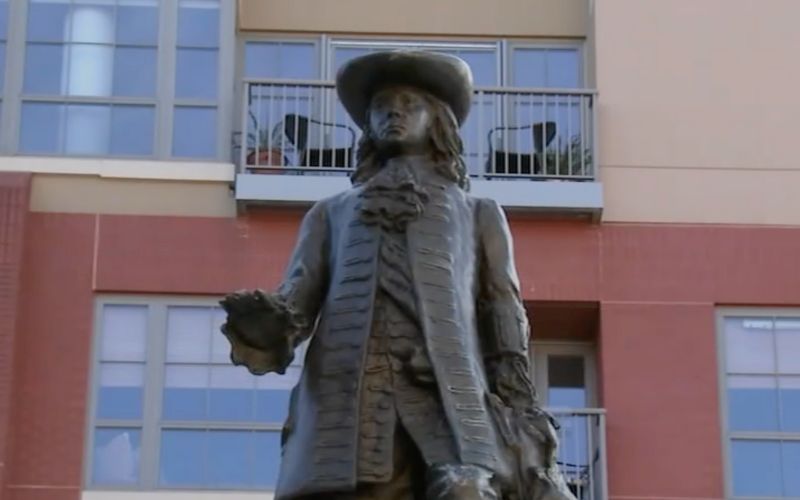
- Details
- By Native News Online Staff
Removing the statue was proposed in the National Parks Service’s (NPD) renovation of the plaza, scheduled to be completed by 2026 for the 250th anniversary of the signing of the Declaration of Independence.
In accordance with the National Historic Preservation Act, NPS consulted with representatives of the Haudenosaunee, the Delaware Nation, the Delaware Tribe of Indians, the Shawnee Tribe, and the Eastern Shawnee Tribe of Oklahoma, whose ancestors were displaced by the Pennsylvania colony.
Penn arrived in present-day Philadelphia in 1682 after being granted the charter for a huge swath of land by King Charles II, land that the English had wrested from Dutch colonialists.
Jeremy Johnson, director of cultural education for the Delaware Tribe of Indians, told NBC Philadelphia that removing the state wasn’t a major point of discussion when NPS officials and tribal representatives met to plan the renovation over video last year. Instead, tribal representatives envisioned an exhibit in the park highlighting the culture, history, traditions and perceptions of the Native Americans who had lived there for thousands of years before Penn arrived.
“We do still speak highly of William Penn,” Johnson said. But tribal representatives “were really just focusing on our culture and our history and that, in a way, he was an important part of it, but ... it was a small interaction compared to our overall history.”
That plan would replace a timeline of Penn’s life and legacy on one wall — with such titles as “gentleman,” “Quaker,” “proprietor” and “friend of Indians” — with new panels featuring indigenous history. The plan also involved adding native plants and trees and circular benches to make it more welcoming, Johnson said.
Ben Barnes, chief of the Shawnee Tribe, told NBC Philadelphia that he objects to removing the statue and pointed out that of the colonists of the time, Penn was known as an ally to Native Americans.
“William Penn was an ally of the Shawnee,” Barnes said. “As long as he lived, he kept his promise. As long as he was able to speak on behalf of the colony in western Pennsylvania, the Shawnees had a home there ... Of all the terrible human beings that inflicted tragedy upon Native peoples, I don’t put William Penn in that category.”
NBC Philidelphia reports that historians say Penn’s willingness to negotiate with Native Americans distinguished him from previous colonizers in the Chesapeake and New England, where early colonial regimes were more willing to use armed force in bloody confrontations to expand their settlements. However, Penn’s mission still led to the dispossession of natives, historians say.
Last week, NPS withdrew the proposal to remove the statue of Penn after public blowback.
More Stories Like This
Native News Weekly (August 25, 2024): D.C. BriefsUS Presidents in Their Own Words Concerning American Indians
Monday Morning: (January 5, 2026): Articles You May Have Missed This Past Weekend
Native News Weekly (January 4, 2026): D.C. Briefs
What Native American Members of Congress Are Saying about the Venezuela Operation
Help us defend tribal sovereignty.
At Native News Online, our mission is rooted in telling the stories that strengthen sovereignty and uplift Indigenous voices — not just at year’s end, but every single day.
Because of your generosity last year, we were able to keep our reporters on the ground in tribal communities, at national gatherings and in the halls of Congress — covering the issues that matter most to Indian Country: sovereignty, culture, education, health and economic opportunity.
That support sustained us through a tough year in 2025. Now, as we look to the year ahead, we need your help right now to ensure warrior journalism remains strong — reporting that defends tribal sovereignty, amplifies Native truth, and holds power accountable.
 The stakes couldn't be higher. Your support keeps Native voices heard, Native stories told and Native sovereignty defended.
The stakes couldn't be higher. Your support keeps Native voices heard, Native stories told and Native sovereignty defended.
Stand with Warrior Journalism today.
Levi Rickert (Potawatomi), Editor & Publisher


